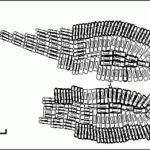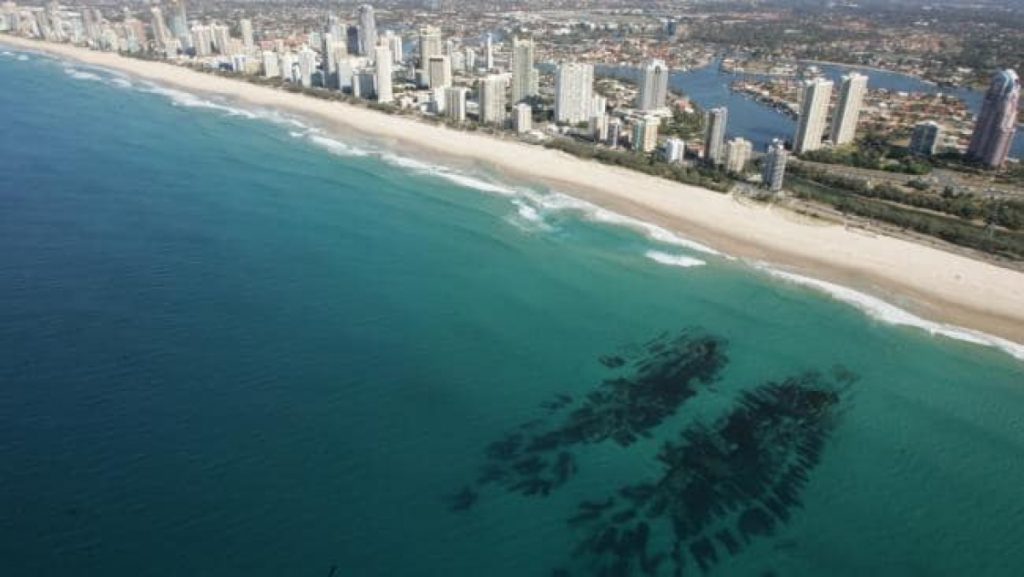
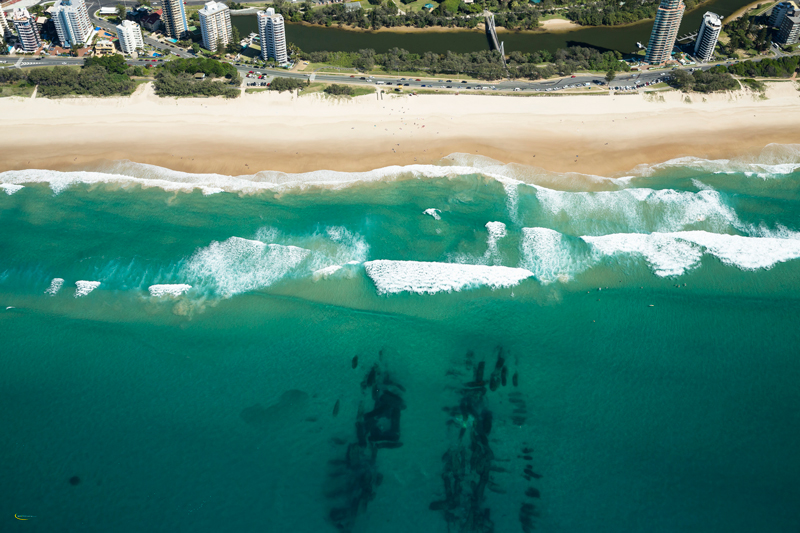
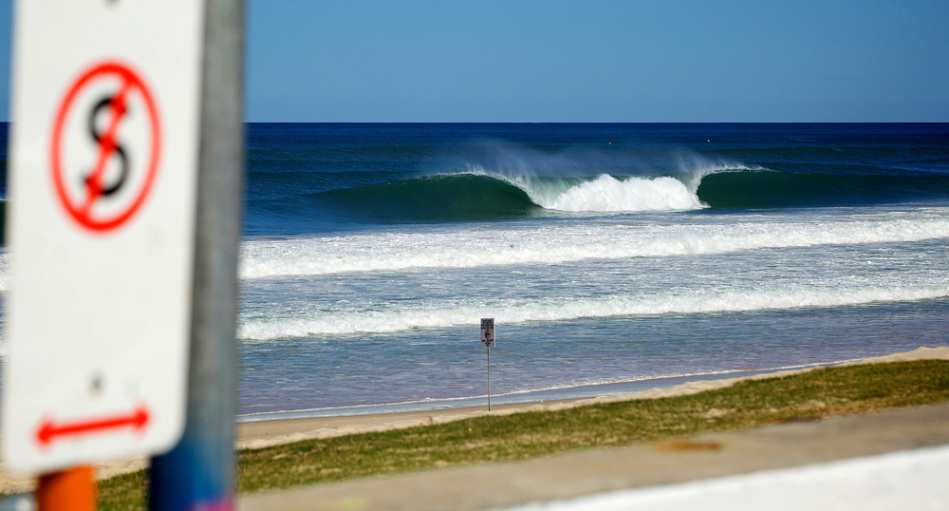
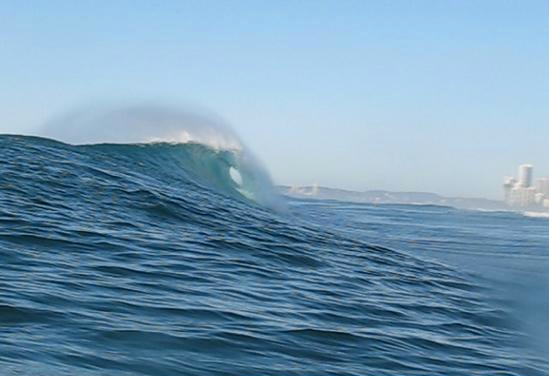
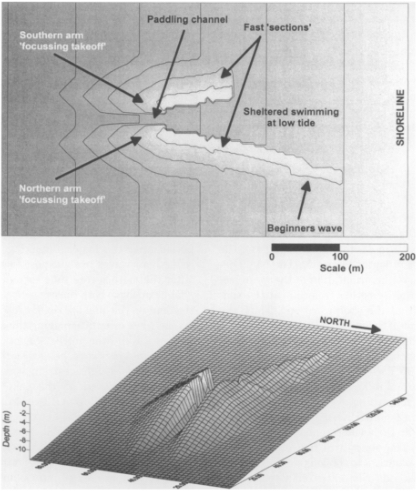
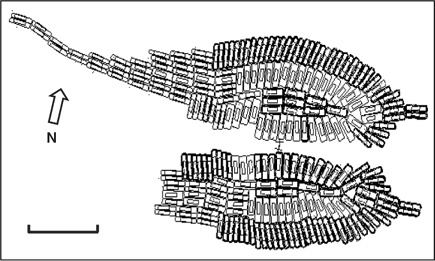
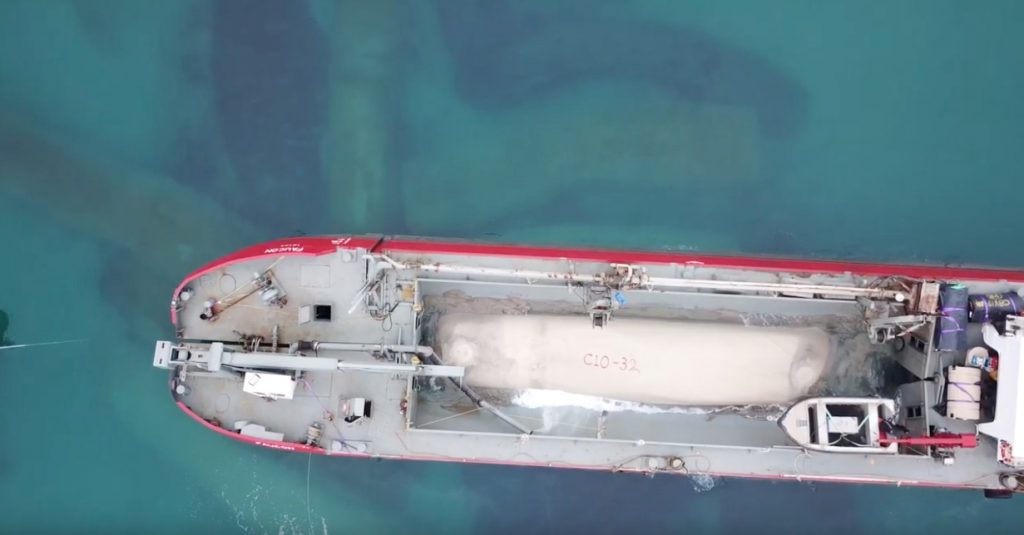
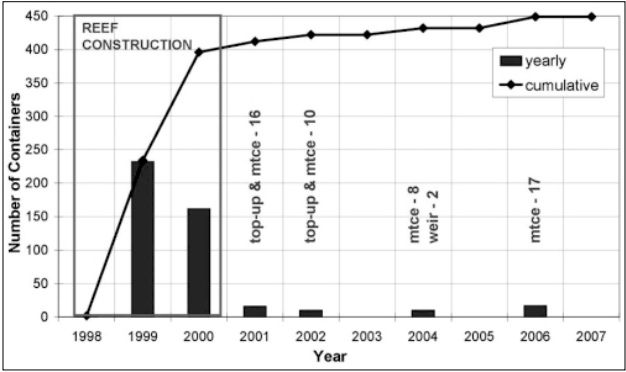
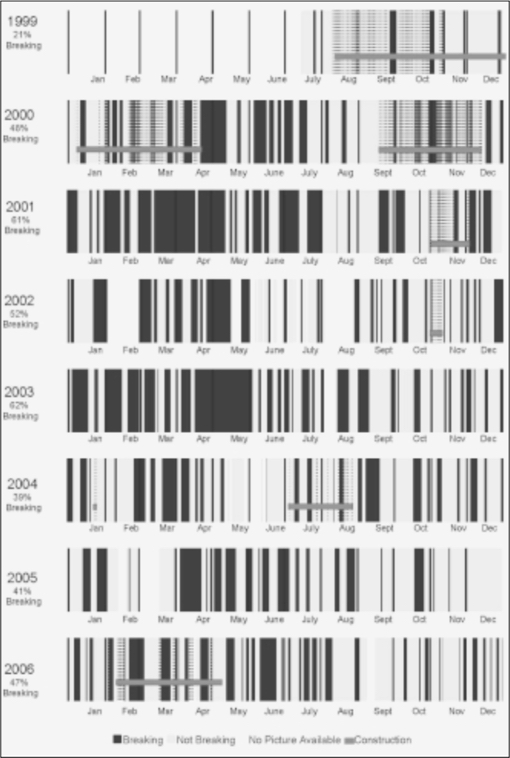
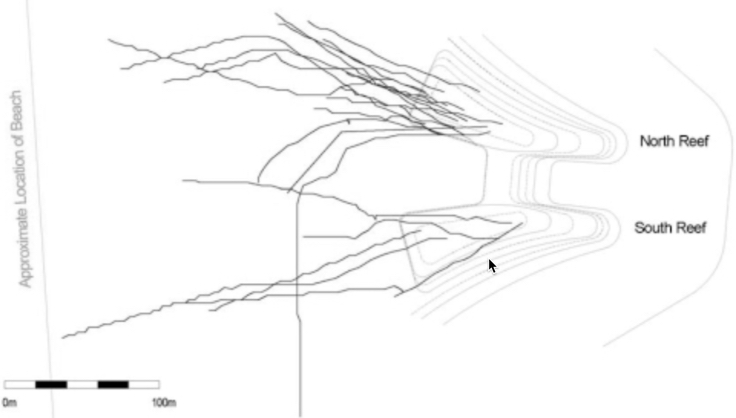
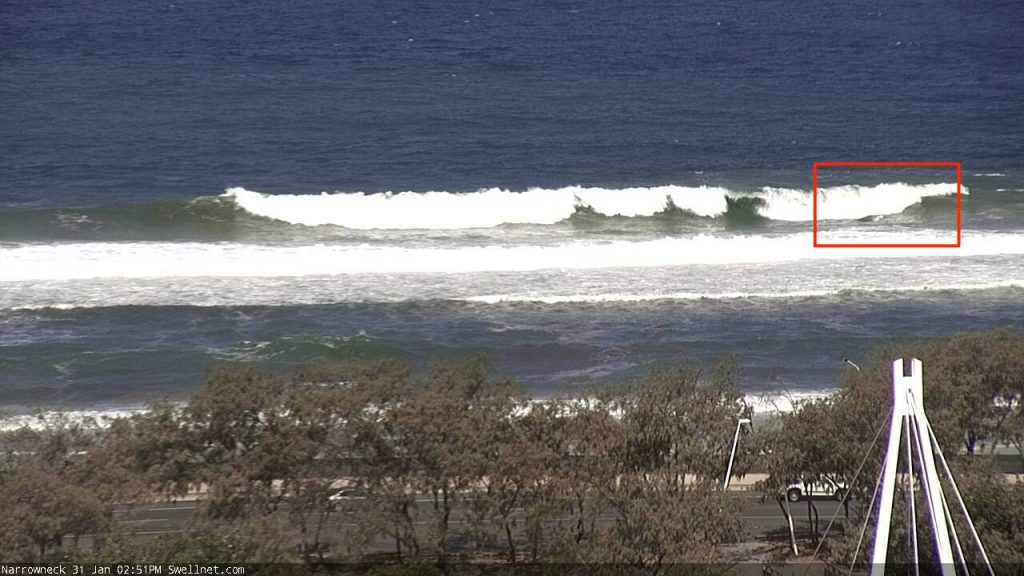
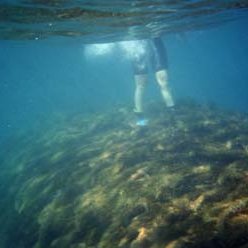
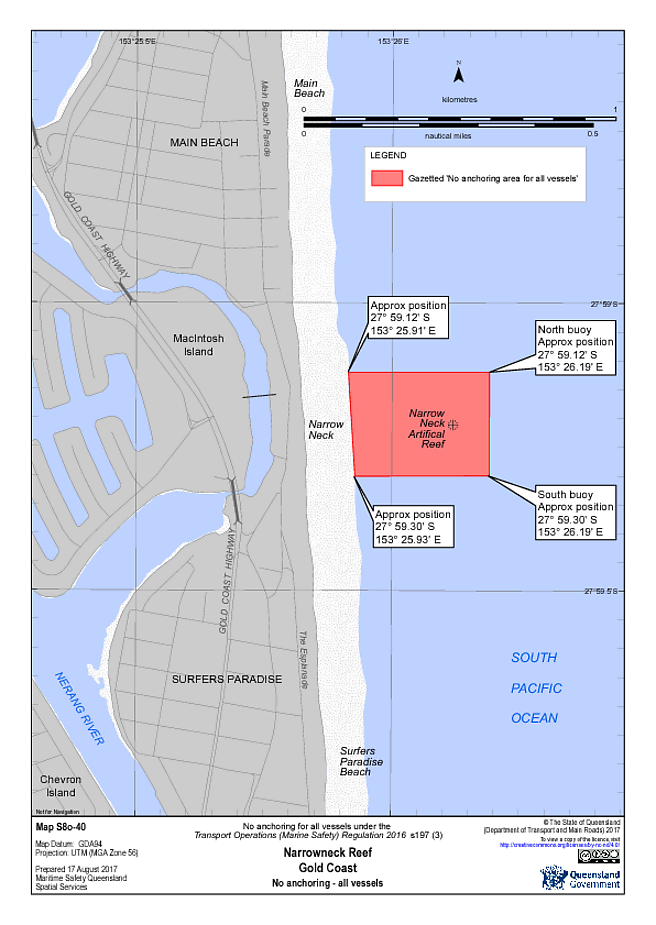
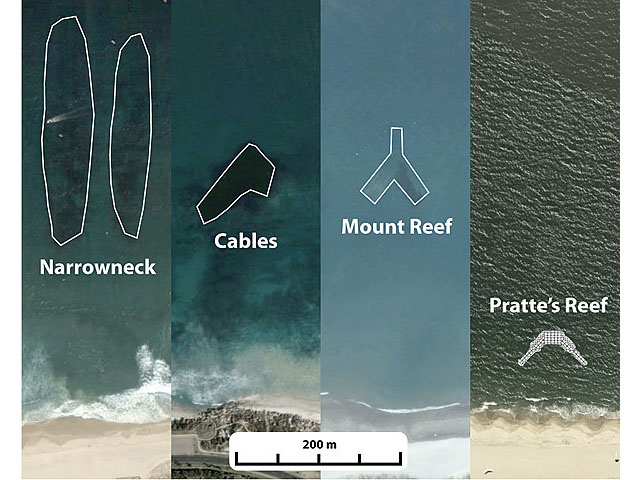
Description
Narrowneck reef (sometimes called “Gold Coast Reef”) is an artificial reef that was constructed in 1999. At 70,000 cubic meters, it holds the title for the largest multi-purpose reef every constructed.
The reef was designed primarily as a shoreline stabilization structure. Creating better surfing waves was a secondary concern. However, it’s generally accepted that it did improve the quality of surf during its earlier years by improving the shape and frequency of rideable wave.
Years of wear and tear on Narrowneck adversely affected its performance, so the Gold Coast City Council decided to refurbish the reef in 2017 and 2018. The Gold Coast City Council considers the update a success in terms of shoreline stabilization. The council also cites “a significant increase in the frequency of wave breaking on the reef”. Locals and surf cameras from Swellnet tell a different tale, unfortunately, both indicating that surfers seldom surf the reef.
Design and Construction
Narrowneck is an isthmus of land that is only 100m wide. The reefs objective is to mitigate wave energy offshore and allow a salient to grow on the beach effectively widening the isthmus. The wider isthmus provides more protection for the structures on land.
The design was undertaken by International Coastal Management (ICM) using a number of specialist sub-consultants. The initial computer modeling and concept design for the reef was done by Professor Kerry Black and his students at University of Waikato (before Black formed ASR as a private company). Black and his students used the refraction-diffraction model WBEND and Bousinesq wave modeling in Model 3DD to design the wave breaking for surfing.
The Water Research Lab at the University of New South Wales created a scaled-down physical model (scale 1:50) to study the shoreline response, impact on wave shape and size.
To achieve the secondary objective of improving surfing conditions, the reef started as a V shape with a shallow crest. The V shape and shallow depth caused strong currents over the crest of the reef. ICM and the Council considered the currents to be a safety issue. The design team then changed to the split-V design to reduce currents and a shoreward extension of the north arm to improve the submerged groin effect provide a wider “shadow”.
Safety concerns lead to a last-minute design change calling for the depth of the reef to be lowered 1m prior to construction resulting in a crest depth of 1.5m below the low tide waterline.
In a novel construction approach ICM specified the use of roughly 400 geotextile bags that were 20m long and 3 to 4.5m in diameter. The bags contained a total of roughly 70,000 cubic meters of sand. The construction crew added the vast majority of bags in 1999 and 2000. They “topped up” the reef in subsequent years to bring the crest closer to the surface (1.5 m deep at low tide) and fill in gaps that had formed due to bag movement and damage.
Total construction costs over the first 10 years was roughly $2.1 million AUD.
Between Narrowneck’s installation and 2017, the reef sunk deeper into to the sand. Many bags tore apart and began to resemble “man made seaweed” according to one local who frequently spearfishes on the reef. These issues reduced its ability to preserve the shoreline and improve the surf. Subsequently, in 2017, the Gold Coast City Council voted to restore the reef by adding 84 new bags that were intended to raise the crest of the reef back to its original designed depth of 1.5m below low tide. The refurbishment was lead by McQuade Marin No 2 Ltd. They used International Coastal Management for project management and design services. The Department of Science, Information Technology and Innovation (DSITI) provided physical modeling services. The cost of the refurbishing was roughly $2.1m AUD.
Results
In 2010, Angus Jackson, Bobbie Corbett and Timothy Evans from International Coastal Management concluded a monitoring study on the Narrowneck. The study found that the reef did improve surfing conditions. The study found that, depending on the tide, waves between 0.7 – 2.0m high (deepwater wave height) were breaking on the reef. In terms of frequency, there were waves breaking on the reef roughly 50% of the time. The study describes the shape of the waves at Narrowneck as fun, but not hollow, in average conditions (1 – 1.5m deepwater swell height). On larger swells with longer periods, lower tides and offshore winds combine the wave could get hollow.
The study also looked at ride length using GPS tracking. In six hours of monitoring waves they collected data on 22 rides on waves <2m high on the face of the wave. They found average ride length was 150- 200m. The longest rides reached up to 260-270m. Ride times averaged 30 seconds, but reached up to 60 seconds. The video below from 2003 shows a fun set but the length of ride is not 30 seconds.
More recent footage, and anecdotal data from local surfers, suggest that the surfing benefits of the reef has decreased noticeably. Even with the renovations to the reef in 2017 and 2018, locals are still reporting few sessions. Additionally, Swellnet cameras rarely capture surfers out on the reef.
Shoreline Impact
Monitoring of Narrowneck by the University of New South Wales Water Research Laboratory suggests that the reef initially achieved its goal to produce wider beach in the shadow of the the reef. Further analysis showed the beach in the shadow of the reef was approximately 20 m wider than areas unaffected by the presence of the reef (Turner, I.L. 2006).
A 10-years study by Angus Jackson, Bobbie Corbett and Timothy Evans of International Coastal Management concluded in 2010 that “there is now a much wider beach and storm erosion to date has easily been contained within the wider beaches. A clear salient feature was predicted and is often visible in the lee of the reef. “
More recent observations fail to show a salient. But according to a city spokesperson, “Previous monitoring and analysis of sand volumes since construction of the artificial reef has shown that the reef promotes an increase of sand volumes in the offshore sand bars, rather than on the upper beach.” The renewal completed in 2018 was not intended to change this, but to increase the volume of sand on the sandbars.
Sources: Swellnet, International Coastal Management,
Photos





